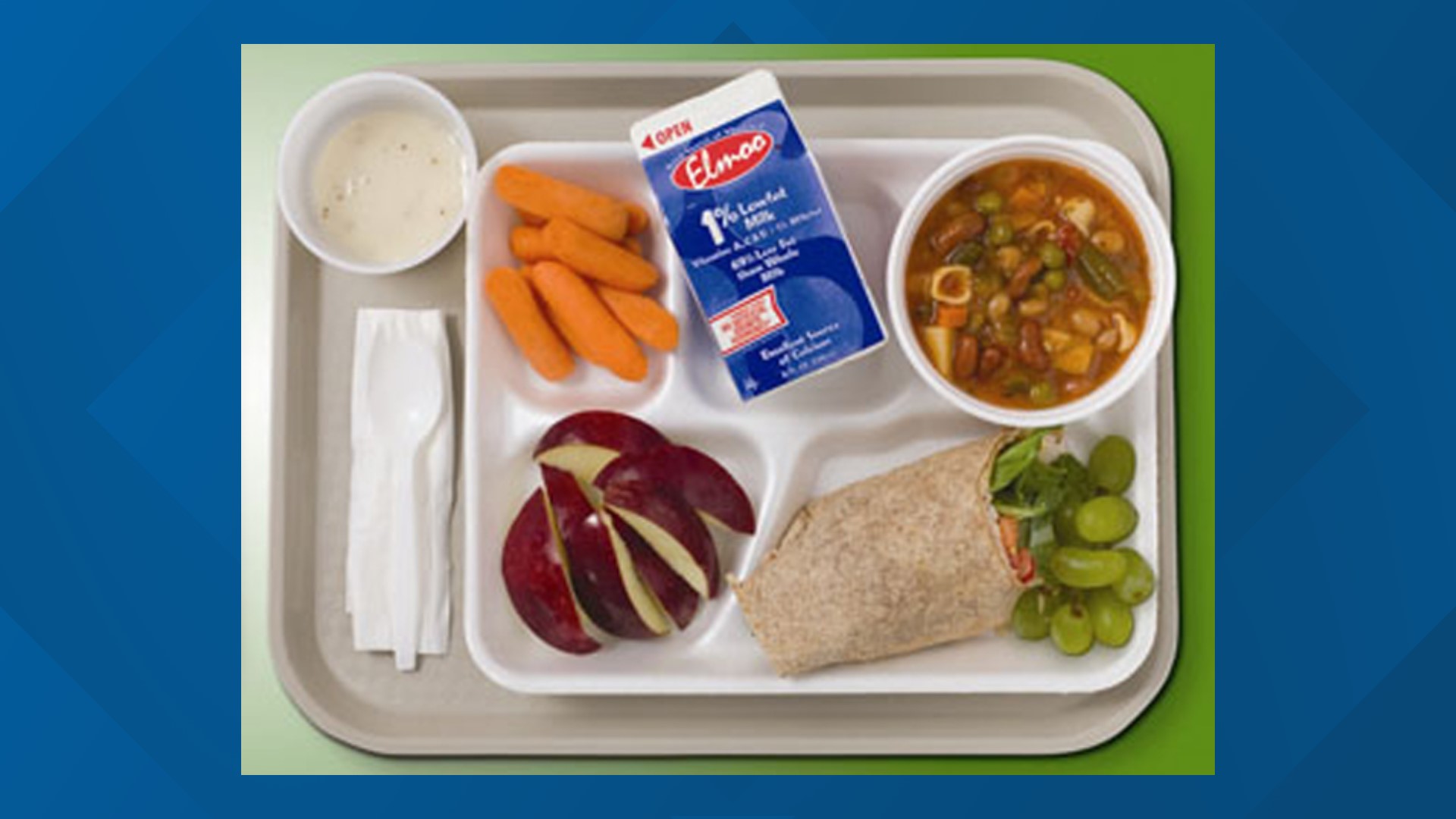WAUKEE, Iowa — Next week, cafeteria tables are going to be filled up with students who will be filling up on school lunch. But with more students than ever eating at school, what goes into the making of all those meals?
In April, the U.S. Department of Agriculture announced an extension to a program that provides free school lunches for all children in public schools. With the start of the school year just around the corner, parents can rest assured that the food their kids will be eating is healthy.
"There's always going to be a meat or meat alternate, there's always going to be a grain or bread product, we're always going to serve fruits and vegetables and milk with every school meal," said Amanda Miller, director of food nutrition for Des Moines Public Schools.
Aside from including the five food groups, school lunches also adhere to strict standards involving calories, saturated fats, trans fats, and sodium. All those restrictions might sound like a recipe for bland food, but districts still want to make sure their kids enjoy what they're being served.
"It's really good to get their feedback, because obviously, they're our customers. And we want to be serving them the things they want to see on the menu," said Kaitlyn Scheuermann, the dietitian for the Waukee Community School District.
The USDA extension is only through 2022, but proposed legislation would make school lunches free permanently. Experts in student nutrition have been meeting with elected officials to discuss the benefits, and Scheuermann is one of them.
"Being able to sit down with legislators, tell them our stories, because a lot of times, they're not here in our kitchens. They don't necessarily see the everyday operations. And so it's really great getting to see them," she said.
There's currently no word on when that legislation will be brought to the floor for a vote.
Catch up on more back-to-school news by subscribing to Local 5's YouTube channel

